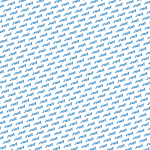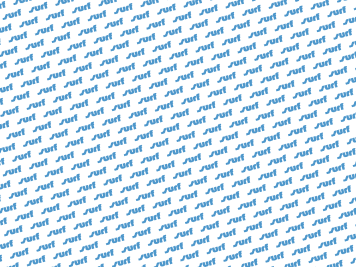The last time a Mistral board was in a surf test was in 2012. What happened after that to make the brand disappear from the (German) market?
During this time, Mistral focussed mainly on SUP, but Mistral was very present on the German market, thanks to Uli and Wolfgang from Sport Vibrations. Anders Bringdal held the licence for Mistral Windsurfing products from 2008 to 2015. Our local partner focussed on all marketing activities in Germany, including regular appearances at boot Düsseldorf.
Two years ago, Dutch investor NMG took over the brand from Ado Huisman. Ado was initially the manager and later the owner of Mistral. A dedicated development team was set up under the NMG banner and we returned to our roots with the slogan "People of the Oceans". In addition to myself as head of development, we are fortunate that both Steve West and Ernstfried Prade are still part of the team. In the windsurfing sector, Italian Gianni Valdambrini, who previously worked for Mistral, will be developing a new range of performance boards.
The company has been sold several times in its history. Is Mistral still the same company today or is it just the name?
The official foundation of Mistral dates back to 1976, which is known to be associated with the evolutionary phase of windsurfing. Of course, like many other long-lasting brands, Mistral has changed with the metamorphosis of new sports during this time: Kitesurfing, Paddleboarding and now Foiling, to be precise.
The way we see it is that Mistral is now a kind of retro-mod company because of its significant heritage with a modern twist. This is a good basis for us to stay in touch with those who like to remember the essence and feel of the brand, while appealing to a new customer base. The past gives us a compass.
Are there other markets in which Mistral is more strongly represented than in Germany? Why?
Germany is still our biggest market and for many people Mistral is a German brand because of the strong associations with the founders, the manufacturers and Mistral's close association with surf magazine. Robby Naish, Mistral's long-time figurehead, is known to speak German and has a fondness for a particular German sports car brand, which has helped to cement Mistral's German roots over many years.

We remain committed to the German market, even if it is not obvious. The thirst for quality and technology that is typical of German culture spurs us on to be better and as good as possible, and that is a good thing. On the other hand, we are endeavouring to develop other regions where we have a strong following, such as Argentina, Japan and Italy.
Coming from a fashion background myself, I try to shape the look and feel of the Mistral range down to the smallest detail, while my colleague Steve West, who has been with the brand since 2013, focuses on the performance of each product.
If you take a look at the website, you might be surprised that Mistral still has a windsurfing line with some freeride boards and sails. What are the characteristics and target groups of these products, who shaped and developed them?
The historical connection with windsurfing creates a "force majeure" that Mistral is expected to maintain its windsurfing roots. Since around 2015, when the windsurfing licence with Anders Bringdal expired, we were conflicted about justifying the capital outlay to revive a full Mistral windsurfing line. In 2019, Mistral contacted Tomas Persson from Simmer Style and we partnered with him as a board and sail specialist and took on a small line of their products, which is a positive addition to our range.
We recently developed a new sail series together with Simmer, which will be launched on the market soon. Our current plan is that we will work on a small line of performance boards for wave and freestyle. We have also thought about revitalising our iconic classic shapes with a modern twist and taking on some of the defining names. Alongside the performance boards, we will also be introducing a range of three school windsurfing boards. It will be called Go Surf and will be available in 160, 180 and 210 litre sizes.
In addition to windsurfing, Mistral also has a wide range of wingfoiling equipment. When did you start in this area?
We have set up a development centre in the south of England where we work on foil design, 3D modelling, mould making and testing. With a dedicated sailmaker we develop and test wings, we have developed the concept of the fully radial cut wing, a cut that we retain to this day for its added stability.

We have now switched to using Hookipa material for higher performance and lower weight. We are very happy with the resulting Skywave wings, complete with moulded grips. Of course, wingfoiling has evolved rapidly and it's a challenge to keep up with rider demands. We are now also trying our hand at prone foiling, particularly downwind, and are starting to experiment with some revolutionary wing designs.
For the foils, Mistral works together with SAB Foils. How does this collaboration work, who does what in this process?
We started working with SAB Foils Italy (formerly Moses), who were early pioneers and way ahead of the curve in terms of composite construction and foil design. We have selected some foils that are tailored to the market we are targeting, focussing primarily on component interchangeability as the key differentiator, and this is indeed the option that many foilers are looking for.
If you compare the SUP, wing and windsurfing sectors, what is most important for Mistral?
At the moment, it is still SUP, especially in the inflatable market, where we have a strong foothold and are well established. Internally, we are endeavouring to create a healthy mix of foiling, windsurfing, surfing and paddleboarding. With the base we have built in SUP, we have started to invest in other areas such as windsurfing, foiling and surfing. Our aim is to build a solid lifestyle brand, with good equipment and clothing, just like in the early days of windsurfing. One of the internal themes is Club Mistral. We have the desire to rebuild water sports centres in some important regions where our designs can become known.
What are your plans for the future - in general and in the windsurfing sector?
We have many people in our team and in our environment who are dedicated to windsurfing and are passionate about it. So there was really no question of bringing it back into the range. When Mistral was sold by Boards & More in 2008, the company was at rock bottom and had to be rebuilt from scratch. There are many Mistral nostalgia groups on social media and Mistral's heritage in windsurfing is undeniable. When we exited the market, the growth of the sport declined, many brands came and went.
We have also thought about reviving some iconic names, such as the Equipe One Design Olympic Class board, in a retro design to stay in touch with our roots. We are also in contact with various companies that refurbish Mistral boards. Strategically, we will roll out the other disciplines first, and the reintroduction of the iconic boards is planned for 2026/27.
In general, Mistral is now a watersports brand that focuses on multidisciplinary activities rather than being a one-trick pony. The trick is to find the right mix so as not to dilute the appeal of the brand. SUP, windsurfing, surfing and foiling are the current mix and we aim to establish Club Mistral stations in collaboration with existing organisers and start-ups. We believe we can gain a foothold here because we have a lot of experience in this area and a lot to offer.
Which target groups are you aiming at?
We have analysed our online sales from the past year, including sales from other brands. Mistral has never been the cheapest brand. Rather, it has earned the reputation of being the most expensive and exclusive. Today, we see our target group as demanding and quality-conscious, and we want to remove the barriers to entry based on income bracket or education level.

Our licence agreement with a large supermarket chain gave us the opportunity to reach a large consumer base with our iSUPs. We have gained the largest market share and many newcomers to the sport of SUP as well as new loyal fans of the brand. We want to cover all areas of accessibility. Yes, we have some higher-end products in our foil range for specialists, but we also have segments for beginners and advanced riders on a budget. Our hardboards with soft decks for surfing and SUP are aimed at schools, resorts, hotels, families and individuals - also with a view to relaunching Club Mistral and collaborating with other water sports centres.
Mistral has a long history and has been a big influence on windsurfing - what does this mean for Mistral today?
It's impossible to erase or ignore Mistral's legacy as a highly influential, or even glamorous, windsurfing brand during the sport's heyday. In fact, we are proud of it. It's been some time since we've had any influence in the windsurfing industry, as the sport diminished dramatically towards the end of the 90s.
With new owners in 2008 and Anders Bringdal taking over the licence from 2009 to 2015, Mistral experienced a brief resurgence in windsurfing, but the influence was not as strong as before; mainly because many brands turned to SUP at this time. Nevertheless, the Mistral name still has a high status within the sport. Those golden days are gone for all brands; it is now infinitely more difficult to dominate or stand out. But with the magic that still surrounds the M dot, there is so much potential.
Mistral's long-time main competitor F2 has also struggled, but is planning another comeback - why do you think the "old" brands are trying to get back on the market?
The legacy of Mistral is still alive. At the time Mistral was founded, there was no internet, video games, smartphones, etc. Windsurfing was the number one fun sport at the time and Mistral was the most recognised brand. The sport had a huge impact on social life and status. If you ask a windsurfer 40 years later which board he rode, he can tell you the exact model and characteristics of the board. You can compare it to the music you grew up with and it sticks in your mind. You can see the same thing with the M-dot. There was a vibe, an emotion that stays with you forever.
We believe that riding a Mistral brings back a piece of the youth of former riders, as seen with fashion brands such as Levi's, Vans and Puma; parents like to share their passion for brands with their children and Mistral is one of those iconic brands with a very enthusiastic audience. The SUP business has revitalised the brand and now it's time to share this passion in different disciplines.







